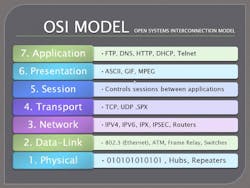Industrial facilities over the past two decades have seen a significant level of fieldbus communication networks replaced by industrial Ethernet. According to a 2021 study by HMS Networks, industrial Ethernet accounts for 65% of new installed nodes, while fieldbuses account for 28% of new installed nodes.
With the continued advance of Time-Sensitive Networking (TSN) through numerous new product offerings and its ability to bring determinism to standard Ethernet, some might wonder if it’s only a matter of time before the industrial Ethernet protocols like Profinet, CC-Link IE, EtherNet/IP, and EtherCAT begin to recede in the face of TSN. A closer look at TSN and the industrial Ethernet protocols explains why this is unlikely—and not possible in the foreseeable future.
Burke notes that some users may wonder why both TSN and industrial Ethernet are needed since most industrial Ethernet protocols can provide determinism when required. He says the answer lies in convergence.
Burke advises OEMs and end users exploring the use of TSN-enabled industrial Ethernet protocols to ensure those protocols can address the I/O, motion control, and safety aspects of the intended application. For example, he notes that CC-Link IE TSN's protocol uses layers 3 to 7 of the OSI reference model to build on the layer 2 TSN capabilities. “By doing this, it allows I/O, motion, and safety control to be integrated with standard TCP/IP traffic in a deterministic way.”




